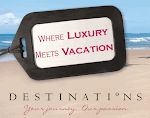You're winging your way across Europe, having the time of your life, when you make a simple mistake. You set your bag down as you slurp an extra-large gelato, and before you know it...your bag is gone. Unfortunately, today's the day you tucked your passport, credit cards, and extra cash in your bag instead of in your money belt. That sinking feeling is the realization that — except for the euro or two in your pocket — you've lost everything.
Odds are, this won't ever happen to you. But a little bit of advance preparation can make even this worst-case scenario a minor bump in your European adventure.
What to Do if You Lose It All
Don't panic. First of all, take a breath. Panic clouds your judgment. And don't beat yourself up: Even the most careful traveler can get ripped off or lose a bag. I once met a family in Amsterdam who managed to lose all their bags between the airport and their first hotel, and went on to have a very successful trip. A positive attitude can be a great asset.
Ask for help. If you're in a country where little English is spoken, enlist the help of a local English-speaker to assist you in making phone calls or explaining the situation to officials. Try your hotelier or someone at the tourist office: Even in the smallest towns, someone is likely to know at least a little English. Fellow travelers you've met and even family or friends back home can also be sources of help.
File a police report. Find a police officer and report the theft or loss. Having a police report may help with replacing your passport and credit cards, and is a must if you file an insurance claim for a lost railpass or expensive travel gear. The police may be able to direct you to a local travelers' aid office or Red Cross-like organization. And if you're extremely lucky, someone may actually turn in your bag.
Use the Internet. Get online at your hotel (if they don't have a public Internet terminal, explain the situation and ask sweetly if you can use their office computer). If you're between hotels, look for free Internet access at the tourist office or a city library. Use the Internet to find contact details for the nearest US embassy and your bank, retrieve information you have stored online, or solicit help from folks back home.
Replace your passport. This is top priority. Without a passport, you can't leave the country, and you'll find it difficult to check in to a new hotel or receive wired funds. To replace your passport, you'll need to go in person to the closest American embassy (usually in the capital city) or consulate (in major towns). A helpful list is at
www.travel.state.gov, or check a local phone book. The US State Department's Office of American Citizen Services and Crisis Management (ACS) has a US number (tel. 202/501-4444; from the US, call 888/407-4747) that aids Americans traveling abroad in natural disasters, receiving money, and replacing passports.
You may be able to make an appointment at the embassy or consulate, or you may need to show up during open hours and wait your turn. If you have access to the Internet, printing and filling out the required forms before you go saves time. Having a photocopy of your passport can help. (I recommend traveling with a copy tucked deep in your bag in case you lose the real deal. For extra protection, give a copy to your travel partner, or scan a copy and store it online in a password-protected account. You could also give a copy to a trusted friend at home, who can email or fax it to you overseas.) If you don't have access to a copy of your passport, embassy staff can look up previous passport records, interview you and your travel partners, and even call contacts in the US to verify your identity.
A replacement passport costs $140 and can generally be issued within a few days, or faster if you make a good case that you need it right away. If you don't have the funds, the embassy will help you contact someone at home who can wire money directly to the embassy. If no one can wire you money, the embassy staff may waive the fee, or they may give you a "repatriation loan" — just enough funds to cover the new passport and get you back home.
Cancel debit and credit cards. Within two days, cancel your lost or stolen debit and credit cards (limiting your liability to $50) and order replacements. Visa, MasterCard, and American Express all have global customer-assistance centers, reachable by collect call from anywhere (see sidebar). You'll need to tell them the name of the bank that issued the card and the type of card (classic, platinum, or whatever); the full card number; whether you are the primary or secondary cardholder; the cardholder's name exactly as printed on the card; billing address; home phone number; circumstances of the loss or theft; and identification verification (your birth date, your mother's maiden name, or your Social Security number — memorize this, don't carry a copy). If you are the secondary cardholder, you'll also need to provide the primary cardholder's identification-verification details. (Some people like to travel with an encrypted list of credit card numbers, or store them online — though be aware that this poses some security risk.)
Your bank can generally deliver a new card to you in Europe within two to three business days. Some may even be able to wire cash to keep you going, or pay for your hotel room directly. Ask about these extra services. It's also possible to transfer money from a bank in the US to a bank in Europe, but this may take several days to accomplish — you'll probably have the new cards faster.
Replace other travel documents. Point-to-point rail e-tickets can often be reprinted from any computer or at the station, but tickets purchased at the station and printed on special ticket paper probably can't be replaced. Unfortunately, you can't replace a railpass — you'll need to purchase new tickets or a new pass to complete your trip. If you bought railpass insurance, you may be able to get a partial refund when you get home. There's no need to replace printed copies of airline reservations — once you have your new passport, the airline can easily look up your e-ticket when you arrive at the airport.
Many other documents you probably had stuffed in your pack can be regenerated easily. It helps if you've saved hotel and car rental confirmations online, memorized your log-in ID and password, or emailed a copy of your itinerary to yourself (or at least left one at home with a friend). Or use an itinerary-storage websites such as
TripIt to gather all this information in one place.
Rearrange travel plans. Depending on how long it takes to get your passport replaced — and how far you have to travel to get to an embassy or consulate — you'll probably need to rearrange your travel plans. Call or email to cancel and reschedule hotels and flights as soon as possible to avoid losing deposits or paying change fees (explaining the situation may help). If you're stuck without cash or credit cards for a few days, see if your bank or a family member back home can pay for your hotel stay.
Replace travel gear. Once you've started the process of replacing your passport and credit and debit cards, you can think about restoring gear such as your camera, phone, laptop, or iPod. Depending on your insurance policy, you may be able to get reimbursed for part of the replacement cost when you get home. Decide which items are critical enough to your trip to replace immediately (flea markets and cheap department stores are great for bargains).
Refill prescriptions. Pharmacies in Europe have the same medications as in the US (though they typically have different brand names — it helps to know the generic name). Pharmacists generally speak English, but you'll need a copy of your prescription — try contacting your doctor's office by phone or email. They can usually fax or email a copy to you in Europe. Your optometrist can do the same for your prescription eyewear.
Replace a rental-car key. If you lose the key to your rental car, call the car-hire company with your rental agreement number and your exact location. Be prepared for considerable expense and a delay: You will be charged $200 or more for a replacement key, and you may need to wait 24 to 48 hours for delivery of new keys or even a different vehicle.
Make the best of the situation. Getting everything straightened out can take a while. Be flexible and patient. It may not help at the time, but try to remember that your loss will make for a good story when you get home. Like a friend of mine says, "When it comes to travel, Tragedy + Time = Comedy."
An Ounce of Prevention
Here are some tips on how to travel safely and smartly.
- Wear a money belt or risk spending a couple days of your cherished vacation in bureaucratic purgatory. Keep a few $20 bills in a separate bag or hidden somewhere on your person. When using the ATM, be methodical about putting your debit card back in the same place in your money belt.
- If you're traveling with a partner, carry photocopies of each other's passports and other important documents. Each adult should have their own credit and debit cards and stash of emergency cash (ideally in a money belt).
- Before your trip, make two sets of photocopies of your valuable documents and tickets. Pack a copy and leave a copy with someone at home. Or store important documents in a password-protected account online (though be aware that, especially for financial information such as credit-card numbers, this does pose some security risk).
- Keep track of your stuff. You're more likely to inadvertently lose your bag than to have it stolen. I've heard of travelers leaving passports under pillows, bags on the overhead rack on the bus, cameras in the taxi, and once even a backpack under a bush beside a hiking trail. Always check behind you before you leave any place or form of transport. Look behind the door and under the bed. Have a mental checklist: moneybelt — check, passport — check, credit/debit cards — check, camera — check...
- You're especially vulnerable when you're tired, confused, or using public transportation. Take turns watching the bags with your travel partner. Don't absentmindedly set a bag down next to you while you wait in line at the train station; always be in physical contact with your stuff. Be vigilant anytime there's a commotion — it's likely a smokescreen for theft.
- Never leave a money belt "hidden" on the beach while you swim. It's safer left in your hotel room. In hostel or dorm situations, where your money belt shouldn't be left alone in your room, shower with it (hang it — maybe in a plastic bag — from the nozzle). Nicer hotels have safes in the room, and sometimes the front desk will keep valuables for you.
If you do lose something, don't let it ruin your trip. Many trips start with a major loss, recover, and with the right attitude and very light bags, finish wonderfully.










